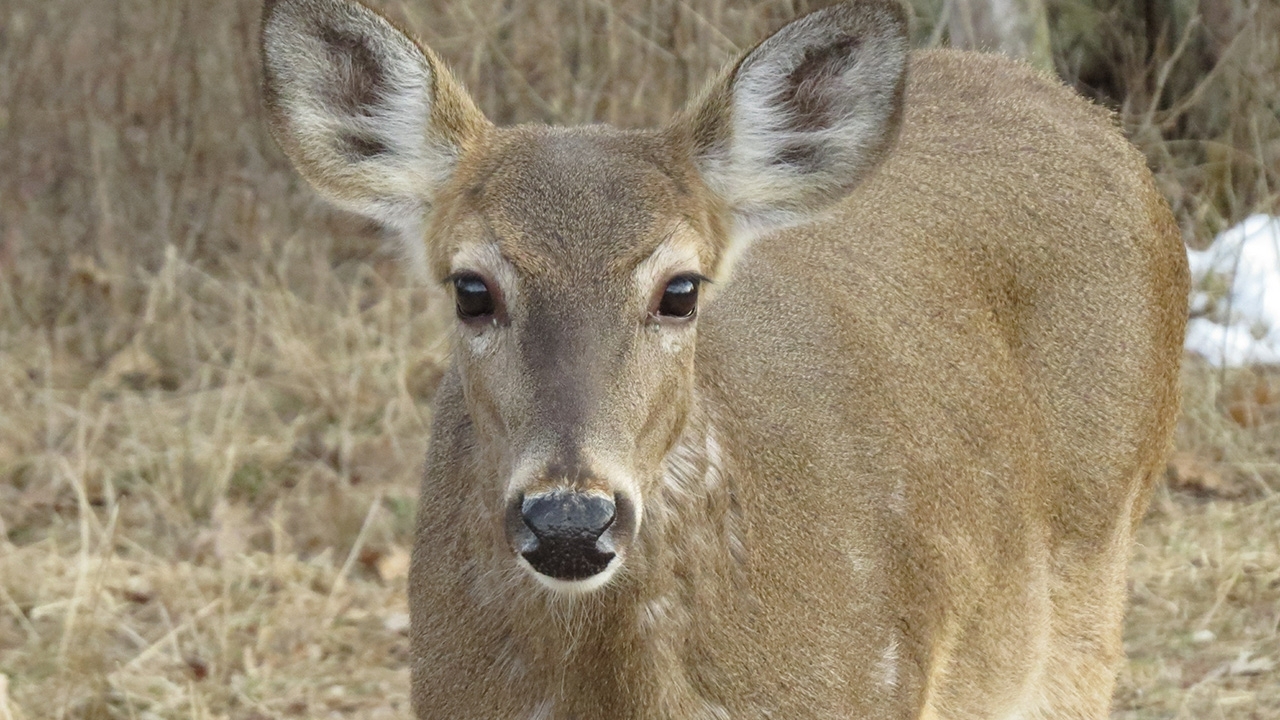NWRC Spotlight: Accomplishments in Chronic Wasting Disease Research

For many years, National Wildlife Research Center (NWRC) researchers have worked to develop methods to reduce the transmission and spread of chronic wasting disease (CWD) among wild and captive deer and elk.
Chronic wasting disease (CWD) is a fatal neurological disease that affects a number of wildlife species, including mule deer, white-tailed deer, elk, and moose. CWD is caused by abnormal proteins called prions. Prions change normal proteins in the host animal’s cells resulting in concentrations of abnormal proteins. Over time, these abnormal proteins accumulate in the central nervous and lymphatic systems causing a degenerative lack of control and a “wasting-away” death.
There is no known cure or vaccine for CWD. The origin of CWD is unknown. CWD was first observed in a captive deer in 1967 in Colorado where it was initially believed to be malnutrition. In 1977, CWD was determined to be a transmissible spongiform encephalopathy and the first infected wild animal, an elk from Rocky Mountain National Park, was diagnosed in 1981.
Since that time, CWD has been found in 25 states and impacted numerous wild and captive herds of deer and elk. Concerns over the impacts of diseases, such as CWD, on the United States livestock industry and wild deer and elk populations continues to stimulate research to prevent disease outbreaks and minimize the transmission of diseases between wildlife and livestock.
From 2002 to present, National Wildlife Research Center (NWRC) scientists have been active in CWD research conducting more than 100 basic and applied studies on deer and elk directed at mitigating disease transmission at the wildlife-livestock interface. Results from this research have helped inform many management and regulatory actions at state and federal levels. The following provides a summary of NWRC’s CWD research accomplishments and recommendations for future research efforts.
- A large focus of NWRC’s CWD research has been on the ecology and behavior of wild and captive deer and elk and the development of simple management methods to prevent the spread of the disease. For instance, NWRC researchers conducted a suite of studies focused on deer and elk activity along game farm fences, the ability of deer to jump fences of various heights, and the design of effective barriers to prevent interactions between captive and free-ranging animals. Results have helped to set standards for fence height and design for security and containment of captive deer herds.
- NWRC has worked with private, state and federal collaborators to develop the first rectal biopsy test for detecting CWD in both dead and live deer and elk. The test is easy to perform, does not require anesthesia, and can be repeated on individuals over time. This live-animal test is currently used in routine monitoring for CWD infection in private deer and elk herds.
- Prions, the infectious agent of CWD, bind to a wide range of soils and minerals potentially forming environmental reservoirs for infection. NWRC scientists assisted colleagues from the University of Nebraska-Lincoln and Creighton University to test the ability of the commercially available enzyme, PrionzymeTM, to degrade CWD prions in soil. Investigators concluded the enzyme, produced by soil bacterium, successfully degraded CWD prions bound to contaminated soil. Although it may be impossible to totally eliminate prions in the environment, a topical enzyme treatment could help limit indirect disease transmission to deer and elk.
- Much of the spread of CWD has been attributed to the movement of captive deer and elk, but some CWD-infected areas have no captive animal facilities. NWRC research demonstrated that scavengers, such as American crows and coyotes, are able to pass CWD-positive tissue through their digestive systems and infect new areas. Other studies showed that prions may be spread to animals who inhale infected dust.
In 2019, Congress expressed a renewed interest in CWD with new legislation being developed in the House of Representatives and Senate to fund CWD management and research. Possible research topics include evaluating the use of dogs to detect CWD; exploring targeted sex and age-class removal of deer to reduce the spread and prevalence of CWD; and characterizing and mapping CWD prion strains across the United States.
For more information, please contact nwrc@usda.gov.

